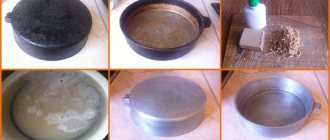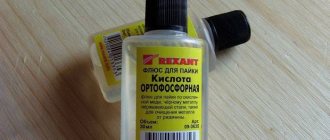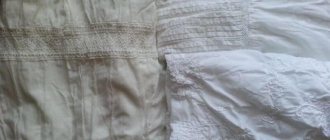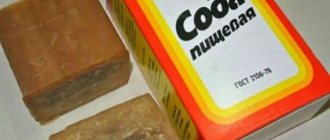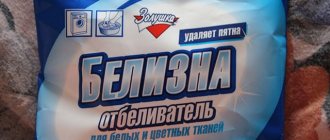Caustic soda , also known as sodium hydroxide, caustic soda or sodium hydroxide, is a product of the chemical industry, has the appearance of flaked white granules without a distinct odor. Caustic is used in the automotive, medicine, oil, gas, and chemical industries. Thanks to its properties, caustic has found its application in everyday life.
Important: the drug has a second hazard class ; if it comes into contact with the skin, it causes burns and ulcers; ingestion will lead to severe poisoning. Therefore, when working it is necessary to use a protective mask and gloves. If soda gets on the skin, it should be washed with plenty of water , and if taken orally, consult a doctor immediately .
Household use
Despite the second class of danger, caustic soda can be used on the farm (subject to appropriate safety measures).
Pipe cleaning
Caustic soda , also known as sodium hydroxide, caustic soda or sodium hydroxide, is a product of the chemical industry, has the appearance of flaked white granules without a distinct odor.
Caustic is used in the automotive, medicine, oil, gas, and chemical industries. Thanks to its properties, caustic has found its application in everyday life. Important: the drug has a second hazard class ; if it comes into contact with the skin, it causes burns and ulcers; ingestion will lead to severe poisoning. Therefore, when working it is necessary to use a protective mask and gloves. If soda gets on the skin, it should be washed with plenty of water , and if taken orally, consult a doctor immediately .
Household use
Despite the second class of danger, caustic soda can be used on the farm (subject to appropriate safety measures).
Pipe cleaning
Using caustic soda to clean drains gives very good results. The alkali will help not only deal with the blockage, but also remove unpleasant odors in the toilet and bathroom. Application methods are as follows:
- Pour half a glass of caustic into the drain hole, carefully pour a glass of boiling water on top and leave for at least two hours. After the specified time, rinse the drains with plenty of water.
- Pour two hundred grams of soda into the hole, add the same amount of white vinegar, leave for three hours, rinse thoroughly with boiling water. This flushing method is used for severe, old clogs.
- Pour two kilograms of caustic into a bucket of boiling water, mix, pour sodium hydroxide and water directly into the drain hole. After three hours, clean the pipes with water.
Important: do not pour soda directly onto the enamel surface of the bathtub, as this may damage the enamel.
Use when washing
Soda can be used when washing; it softens water well and removes various stains. Use caustic soda solution only for washing linen and cotton items ; washing silk, wool and other fabrics that require careful handling is not recommended. To prepare the solution in a five-liter container, you need to dilute five tablespoons of soda and mix. Dry laundry is dipped into the solution, left for two hours, and then washed with powder or soap .
When washing in a machine, two spoons of the product are added to the washing powder compartment. Important: after using caustic soda, things must be rinsed thoroughly.
Cleaning kitchen utensils
Carbon deposits and old fat can be removed from steel and cast iron cookware using alkali. You will need the following ingredients:
- Soda - 200 g.
- Water - 10 liters.
- Silicate glue or liquid glass - 150 ml.
- Laundry soap - one bar.
Preparation of the solution: pour water into a container, add soda, glue or liquid glass, grated washing soap, mix everything thoroughly. The dishes are dipped into the washing solution, the container is placed on the fire and boiled over low heat for two hours, after which you need to wait until it cools completely. Rinse the cleaned dishes well under running water.
Important: aluminum and Teflon cannot be washed with caustic soda; calcined salt is used for such dishes. The difference between them is that calcined salt is much less active and will not damage the dishes.
Carbon deposits and old fat can be removed from steel and cast iron cookware using alkali. You will need the following ingredients:
- Soda - 200 g.
- Water - 10 liters.
- Silicate glue or liquid glass - 150 ml.
- Laundry soap - one bar.
Preparation of the solution: pour water into a container, add soda, glue or liquid glass, grated washing soap, mix everything thoroughly. The dishes are dipped into the washing solution, the container is placed on the fire and boiled over low heat for two hours, after which you need to wait until it cools completely. Rinse the cleaned dishes well under running water.
Important: aluminum and Teflon cannot be washed with caustic soda; calcined salt is used for such dishes. The difference between them is that calcined salt is much less active and will not damage the dishes.
Application on a personal plot
Sodium hydroxide is also useful in private households.
- The solution will help disinfect greenhouses , cellars, cages and all rooms where farm animals were kept. To do this, dissolve ten tablespoons of the product in ten liters of hot water and thoroughly rinse the buildings with the resulting solution. This treatment will rid the buildings of fungus, parasites, and bacteria. The same product can be used to wash the floors in a living room to not only clean, but also disinfect the surface. It is only necessary after washing with soda to rinse the surface well with clean water and wipe dry.
- Plants are sprayed with a solution consisting of one to two liters of water and one spoon of caustic soda. Spraying will lead to the death of weevils, aphids and other harmful insects, and will help cope with powdery mildew and late blight.
- If a private house has an autonomous heating system, it can be easily washed with caustic soda. To do this, using a pump, fill the system with a twenty percent sodium solution and leave it for two days, then drain the solution along with the dirt and rinse the system with clean water.
Making homemade soap
Sodium hydroxide is also useful in private households.
- The solution will help disinfect greenhouses , cellars, cages and all rooms where farm animals were kept. To do this, dissolve ten tablespoons of the product in ten liters of hot water and thoroughly rinse the buildings with the resulting solution. This treatment will rid the buildings of fungus, parasites, and bacteria. The same product can be used to wash the floors in a living room to not only clean, but also disinfect the surface. It is only necessary after washing with soda to rinse the surface well with clean water and wipe dry.
- Plants are sprayed with a solution consisting of one to two liters of water and one spoon of caustic soda. Spraying will lead to the death of weevils, aphids and other harmful insects, and will help cope with powdery mildew and late blight.
- If a private house has an autonomous heating system, it can be easily washed with caustic soda. To do this, using a pump, fill the system with a twenty percent sodium solution and leave it for two days, then drain the solution along with the dirt and rinse the system with clean water.
Making homemade soap
Soda is one of the components of soap that can be made at home, and its cleaning ability will depend on the amount of soda. Required components:
- Oil (linseed, olive) - 500 ml.
- Caustic soda - 200 g.
- Essential oil - a few drops.
The cooking process is quite simple:
- Heat the oil in a water bath.
- Add soda to two hundred grams of hot water and mix.
- Add oil to the soda solution, add essential oil, stir until a homogeneous viscous mass is obtained.
- Pour into molds and leave for several days until completely dry.
Sodium is an inexpensive and widely available product . You just need to follow the instructions for using caustic soda, and it will become an excellent assistant in housekeeping and keeping your home clean.
uborka.co
Scope of application of sodium hydroxide
On an industrial scale, caustic alkali is used for:
- determining the acid concentration or neutralizing its effect;
- aluminum processing;
- regulation of acid levels in food;
- wastewater treatment from heavy metals;
- normalization of water pH;
- manufacturing of medicines;
- giving cotton fabrics a silky shine;
- production of cosmetics.
At home, caustic soda is used mainly for cleaning sewers and cesspools.
Types of alkalis
There are not very many alkalis (strong bases):
- NaOH sodium hydroxide (caustic soda);
- KOH potassium hydroxide (caustic potassium);
- LiOH lithium hydroxide;
- Ba(OH)2 barium hydroxide;
- Ca(OH)2 calcium hydroxide (slaked lime).
https://youtu.be/7JXFlDxNGk4
All of them are hydroxides of metals of subgroups Ia and IIa. An exception to the standard list of alkalis is monovalent thallium hydroxide (formula TlOH), which is also considered a strong base and quickly dissolves in water.
Poisoning
In household chemicals, alkalis are used very often. Due to careless handling, as well as due to their caustic nature, various types of injuries can occur: poisoning and burns. The severity of poisoning depends on the concentration of the drug used.
The most severe form of alkali poisoning occurs when the substance is ingested. Burns of the mucous membranes of the eyes, nose, and mouth often occur.
Alkalies are eliminated from the human body through the kidneys and intestines, so in case of poisoning, these organs are also damaged. If a person is poisoned or burned, you should try to provide first aid before the doctor arrives.
The patient needs special treatment and observation in a hospital setting. If the substance gets inside, the patient can be given an acid-containing solution (Aminocaproic acid, citric acid) to neutralize it. When an acid combines with an alkali, water is formed, and the harmful effects of the alkaline agent on the mucous membrane of the esophagus and stomach are reduced.
appteka.ru
What to do if you are burned by caustic soda?
Concentrated soda can cause severe chemical burns. Deep skin layers can be damaged. With severe damage, necrotic tissue damage may develop. If this substance gets on your skin, rinse the affected area quickly with plenty of water. Rinse the skin for at least 20 minutes. It is not recommended to use wet towels, because... this will cause the caustic substance to be rubbed into deeper layers.
After this, it is necessary to treat the skin with boric acid, a solution of vinegar or lemon juice. This will reduce the harm from exposure to the concentrated solution. Then you need to apply a bandage soaked in water to the affected area and take a pain reliever. If blisters form, seek medical attention.
More dangerous is getting the concentrated solution into your eyes. This can lead to vision loss due to critical retinal damage. If the product gets into your eyes, rinse them with cold running water and consult a doctor as soon as possible. With timely assistance, it is possible to preserve the organs of vision.
Alkali vapors can cause burns to the respiratory tract. In this case, the person requires urgent medical care, because... there is a high probability of death due to asphyxia. Accidental ingestion of an alkali solution is extremely dangerous. This can cause severe burns to the mucous membranes of the mouth, esophagus and stomach. In this case, you urgently need to rinse your mouth with water and call an ambulance.
Differences between caustic soda and other types of soda
Despite the fact that caustic soda, soda ash and baking soda belong to the same group of sodium compounds, there are still differences.
- According to the chemical formula. For calcined it is Na2CO3, and for food it is NaHCO3.
- By force of influence. The softest is baking soda, the second place is occupied by soda ash, and the undisputed leader is caustic soda. Caustic is able to cope with the most severe dirt and blockages. Calcined and food-grade ones cannot do this.
- For safety. Caustic soda is much more aggressive than all its “relatives” and has a higher hazard class, so precautions must be taken when working with it.
What is this
This is interesting. Caustic soda is the first alkali in terms of volume of consumption in the world. It began to be used for household purposes back in the 7th century: in Arab countries it served as one of the main components for making soap.
The chemical formula of caustic soda (NaOH) indicates that it is formed by the reaction of sodium with oxygen and hydrogen.
The substance is hard white granules or flakes. It is distinguished by its ability to easily dissolve in water; the process is accompanied by the release of a large amount of heat.
Caustic alkali is widely used for both domestic and industrial needs.
Fighting blockages in sewer pipes
Where is this rubber soda used and how to dilute it at home? Before starting work, you need to make sure that contact with caustic occurs without consequences. Rubber gloves, goggles, and a protective mask are mandatory attributes. Sodium hydroxide has the ability to immediately dissolve fat, no matter how old it is. In addition, it is cheaper than imported cleaning products. 1 kg of caustic powder for technical purification will cost an average of 80 rubles (data as of June 2018). Caustic can be found at the heart of the formula of ready-made products, for example, in the composition of “Mole”.
If you live in a private house, then to remove blockages you need 3 kg of caustic powder, and in an apartment building 2 kg is enough. You will also need a plastic bucket with thick walls with a volume of 10-12 liters and a convenient scoop or scoop.
The process of preparing the solution itself is as follows. Pour the required amount of alkali into the bucket. Carefully fill with cold water, but not to the very top, but a little more than half (6-7 l), mix well. As soon as the chemical reaction ends, the composition is ready.
Solution
Peculiarities. Cast iron and steel can withstand this processing method, but not plastic pipes - caustic can simply corrode the surface of the material. If the blockage is small, it is enough to carry out the procedure once. In advanced cases, manipulations must be repeated after two weeks.
Your actions
- Carefully pour approximately half of the total weight of the resulting caustic solution into the drain hole.
- Make sure that the product does not splash onto the surface of the floor or sink - caustic can corrode the enamel.
- Wait about two to three hours (do not use plumbing).
- Pour in the rest of the solution and wait the same amount of time.
- Turn on the water and pour it into the drain for 10-15 minutes at maximum power.
- If you live in an ordinary high-rise apartment, then the solution does not need to be divided into two doses - fill it all at once. The rest of the manipulations are the same.
"Dry" method
Peculiarities. The method is one of the most effective, but requires maximum care. Suitable for prevention and disinfection, as well as after treatment of sewerage with acidic agents - this way you can neutralize the aggressive effects of acid. Keep in mind that the “dry” cleaning method may damage the pipes.
Your actions
- Pour 2-3 liters of hot water into the drain. This is done to warm the pipes and increase the effectiveness of the procedure.
- Pour two or three tablespoons of powdered or granulated caustic soda (in advanced cases, you can even take one glass) down the drain. Make sure that the substance does not spill onto the surface of sinks, toilets and bathtubs.
- Then pour in hot water (only 200-250 ml is enough).
- Wait two to three hours for the chemical reactions to take place completely.
- Turn the faucet on full blast and rinse off the solution.
Gel
Peculiarities. Liquid caustic is less effective in combating blockages, but is safer and more convenient to use. Ideal for preventive purposes. It is enough to repeat cleaning once or twice a month.
Your actions
- Shake the gel thoroughly without opening it.
- Pour about a glass or a little more into the drain (take care of enamel surfaces).
- Follow this with a glass of hot water and wait two to three hours.
- Open the tap to maximum pressure, pour into the drain for 10-15 minutes. This time will be enough for the softened dirt residues to be washed away.
Cleaning the cesspool
Peculiarities. Getting caustic into the soil has a negative effect on the soil. Therefore, the pit must be absolutely sealed and have a proper ventilation system.
Your actions
- Prepare the solution according to the same principle as described above for sewer pipes. Depending on the size of the pit, 2-4 kg of caustic soda will be required.
- Fill the drainage hole with the mixture.
- As a rule, the active period of the product lasts about four minutes.
- The cycle must be repeated twice.
Soot and scale
You can often see sodium hydroxide recommended as an effective home remedy for cleaning dishes from scale and deposits.
Caustic soda can really cope with these problems due to its ability to easily remove even old plaque.
Approximately half a glass of caustic alkali is diluted in a bowl of cold water, the dishes are immersed there and left for 5-15 minutes, depending on the degree of contamination. If necessary, repeat the procedure.
Modern cleaning products cope with soot and scale no worse than caustic sodium, but do not require careful adherence to personal safety rules.
Therefore, it is advisable to use caustic soda only when other methods have proven ineffective.
Use in everyday life
In everyday life, caustic is often used to remove contaminants. It has the ability to neutralize even the most stubborn fat.
Cleaning the dishes
Peculiarities. Do not use the product on Teflon or aluminum kitchen utensils. But enameled, cast iron and steel utensils look like new after such procedures.
Your actions
- Take a large metal container and fill it with at least 10 liters of water.
- Pour about 200 g of caustic into the liquid.
- Add shavings of laundry soap obtained from one bar.
- Pour in 150 g of “liquid glass” (also called stationery glue).
- Mix all this thoroughly and place the dishes that require cleaning into the solution.
- Place on low heat, wait until the solution boils and keep for another couple of hours.
- After the specified time has passed, remove the utensils and rinse thoroughly with water.
Making soap
Peculiarities. The independently obtained product is no worse than expensive analogues: it foams well and has excellent cleansing properties. Only caustic must be used to the highest degree of purification, marked chemically pure and analytically pure (“chemically pure” and “pure for analysis”, respectively). As a rule, it is sold in stores for soap makers and can cost from 150 to 500 rubles per 1 kg (data as of June 2018).
Your actions
- Slightly heat 0.5 liters of vegetable oil.
- Mix distilled water (150 ml) and caustic soda (70 g).
- Combine the mixture with oil.
- Mix the solution thoroughly with a wooden spatula, wait until the caustic soda is completely dissolved and a thick consistency is obtained.
- Add two to three tablespoons of any aromatic herbs or five to six drops of your favorite essential oils for scent.
- Pour the gel-like substance into a rectangular container and leave it alone for four days in a dry place.
- After this time, cut the soap into pieces of the required size with a sharp knife and, if necessary, leave the resulting products to ripen.
Soap making
Sodium hydroxide has been used to make homemade soap for decades.
In recent years, this method has rapidly returned in popularity. This is due to the fact that soap created on the basis of caustic soda copes well with complex and old stains.
To prepare 1.5 liters of this product, you will need:
- 1 liter of any vegetable oil (used can be used);
- 150 g caustic soda;
- 380 ml cold water;
- container (enamel and aluminum dishes are not suitable);
- wooden spatula for kneading;
- mixer;
- soap molds.
When making soap, you must wear protective gloves, goggles, a respirator and closed clothing. Preferably in a well-ventilated area.
- Pour the soda into the water, stirring carefully with a spatula until completely dissolved.
- The resulting mass is gradually introduced into the heated oil.
- Beat with a mixer until the consistency resembles thick sour cream. This process may take approximately 40 minutes.
- Fill grease-free molds with soap, give it 3-4 days to harden, then remove.
- It takes about 20 days to ripen. After this period, you can start using it.
Other areas
The scope of application of sodium hydroxide, due to its unique ability to corrode any dirt and leave behind sterile cleanliness, is quite extensive: at home, in your summer cottage, and even in livestock farming.
- Rust. To return the pipes to their original appearance, they are first treated with acidic agents, and then a mixture of caustic soda, formalin and ammonium diluted with water (in equal proportions) is applied.
- Stains from fuel oil and ingrained fat. To rid things of particularly heavy stains, soak and leave them for two to three hours in a solution of 2% caustic soda (a tablespoon per liter of water). After that, wash as usual. Particularly daring housewives even use caustic soda in an automatic machine. Three to five tablespoons are poured directly into the drum and a cycle is started with a temperature of 50-100oC. If you are going to wash by hand, then the proportions are three tablespoons of caustic solution per 10 liters of water. You should not try to clean wool and silk fabrics in this way - irreparable damage will be caused to delicate materials.
- Washing floors. For 10 liters of liquid you need three tablespoons of a powdery substance. Wipe the surface with the solution, then run over it with clean water and wipe everything dry.
- Disinfection. If livestock becomes ill, the premises where the animals are kept are treated with a 4% caustic solution.
- Plant processing. Gardeners use caustic soda (five tablespoons per bucket of water) to treat the bushes. This process will not give caterpillars, gray mold and powdery mildew a chance to survive. Caustic acid can accumulate inside the soil. Therefore, such procedures should not be carried out regularly.
Pipe processing
Using caustic soda, you can clean the drains in the bathroom or toilet yourself.
Advice. Caustic soda should not be used for kitchen pipes, since, by reacting with fatty substances accumulated there, it can cause the blockage to thicken.
For cleaning, use sodium hydroxide solution or powder. The second option is safer to use. The powder is poured into the sewer hole, observing all precautions, a glass of warm water is poured into it and left for 2-3 hours. After this time, the pipe is washed.
Another application is to neutralize the effects of acidic agents.
Acids effectively remove any type of grease deposits, which is why they are often used to clean sewer pipes. However, over time they provoke the appearance of metal corrosion. Treatment with caustic soda helps stop this process.
Safety regulations
Sodium hydroxide is a powerful alkali that can corrode even hard materials. To preserve your health and the integrity of surfaces, it is imperative to take precautions.
- Wear protective equipment. Before starting the procedures, arm yourself with goggles and a mask, rubber gloves should reach your elbows, clothing should be tight and not leave exposed areas of the body. This will protect yourself from chemical burns.
- Wait for the reaction to complete. Since caustic, when interacting with water, is capable of generating heat, you should not immediately start performing procedures with it. Wait a few minutes for the chemical reactions to complete.
- Do not spray the product. Surfaces, especially enameled ones, may suffer from this.
- Avoid contact with skin. If the product gets on exposed areas of the body or in the eyes, rinse them immediately under running water. Then treat with 2% boric acid. If after half an hour the burning sensation and redness still do not go away, seek medical help.
- Store correctly. Caustic must be stored in a well-closed iron or glass jar. It should not be in the public domain, as it is poisonous and explosive.
Remember that frequent use of caustic can lead to the destruction of the surface of even the most durable materials.
Reviews
I have been using caustic soda for a long time; my parents also used it. For sewerage, I consider it the best option, the main thing is not to run it to such an extent that mechanical cleaning is needed. I even use this soda for prevention, I just pour it down the drain and pour it with hot water. This way the drain does not get dirty, especially if you do this at least once every two to three months. By the way, caustic soda is great for washing very heavily oiled items, such as work clothes. I buy caustic soda in powder, it seems to me more convenient to dose.
Nina Alexandrovna, https://kvartirnyj-remont.com/primenenie-kausticheskoj-sody-dlya-chistki-kanalizacii.html
In our house, all the pipes and all the plumbing are very old. There were constant blockages in the kitchen, we took advertised products such as tire, it helped, of course, but not for long. Do I need to explain that these funds cost a pretty penny? Then they told us about caustic soda. We bought it, tried it, liked it. The main thing is that it is affordable. Blockages still happen, but they are rare.
Maria, https://postwater.ru/kanalizaciya/v-chastnom-dome/kausticheskaya-soda.html
woman365.ru
Alkalis in everyday life
Alkalis are crystalline bases that are highly soluble in water. They are soapy to the touch and are strong catalysts for attacking a variety of materials, including porcelain or glass. Therefore, storing them in vessels that consist of these materials is strictly prohibited. Most often, plastic containers are used for this.
Caustic soda or caustic soda, scientific name is sodium hydroxide. A crystalline substance of light yellow or completely white color, commercially produced in the form of granules. Excellently dissolves various fats and has a strong cleaning effect. Cleans oil stains from various products, cleans sewer pipes from fatty build-ups.
You can find the best restaurants on Smolenskaya by visiting the website gayanes.ru. Only there there are excellent restaurants with the best cuisine and reasonable prices.
Slaked lime or scientifically called calcium hydroxide. It is most often used in the construction industry for whitewashing and plastering walls and ceilings.
Ammonia or ammonia solution is a liquid with a sharp, irritating, unpleasant odor that negatively affects the mucous membranes of the eyes and nose. In everyday life it is used as a 25 percent solution. With its help you can wash woolen products and remove stains that are of organic origin: resins, fats, milk. Recently, it has been widely used in window cleaning products. Since ammonia has excellent cleaning properties, it does not leave streaks on the surface of the glass. Also, a weak solution of ammonia is used to clean and add shine to gold and silver products; for this, the solution needs to be heated, and then the jewelry should be lowered there for a while. Ammonia is capable of forming compounds with metals that dissolve in water.
infourok.ru
What is alkali, where is it used and used?
Alkalis belong to a group of chemical compounds called bases. Bases consist of a hydroxy group (OH) and a metal atom (K, Na, Li, Ca, Ba) or an ammonium cation instead. Alkalis are soluble bases. When dissolved, their crystals become caustic and “soapy.” Based on this, to provide emergency care for burns with alkalis, weak solutions of acids (mainly acetic and boric) are used. This technique is called the neutralization reaction, which results in the formation of salt and water. And when working with them, use safety glasses and rubber gloves.
Alkalis are classified as strong bases - they react actively with other substances due to the easy elimination of hydroxy groups. Like other bases, when heated, they decompose into water and oxide, and their solutions change the color of the indicators.
Alkalis are stored in plastic containers because they corrode even porcelain and glass. They strongly absorb moisture.
Use of alkali. Caustic soda (also known as sodium hydroxide or caustic soda) has cleaning properties and is used in many household chemicals. Most suitable for dissolving fats. Caustic soda is also used for the production of cellulose in the paper industry, the production of oils in oil refining, and it acts as a catalyst or reagent in the chemical industry. It is used in the production of environmentally friendly biodiesel fuel. And what is absolutely surprising is that this alkali is used in the production of cocoa, ice cream, chocolate, bread, and drinks.
Slaked lime (calcium hydroxide) is widely used in construction for whitewashing and plastering walls.
Ammonia (ammonia solution) has a strong odor. Softens wool when washed, removes stains from milk, resin, and fat. Cleans glass, gold and silver well without streaks.
Alkalies are used in fish farming to disinfect ponds and as fertilizer. They act as an electrolyte for alkaline batteries.
Alkalies are widely used in medicine as antiseptics, cauterizing and irritating drugs, since they are able to dissolve proteins. Alkaline mineral waters have a beneficial effect on the body in diseases of the gastrointestinal tract. These substances are also used in the treatment of gout (dissolve uric acid), stomatitis, diseases of the respiratory system (mucolytic effect), as a diuretic, and for acid poisoning (in this case the same neutralization reaction works).
Alkalis are involved in the production of soap, artificial fiber, rubber, dyes, vitamins, wood processing, cleaning metal objects, and are also involved in the chemical and light industries, agriculture (fertilizers), and metallurgy. Alkalis act as a refrigerant in refrigeration units.
As can be seen from the article, alkalis play a huge role in human life. But you should remember the dangers that lie in wait when working with them. Following safety precautions, we managed to make them our assistants.
What is sodium hydroxide
This compound is a caustic alkali, which is used not only in the food, pharmaceutical and cosmetic sectors, but also in the chemical industry. Sodium hydroxide, or caustic soda, comes in the form of slightly slippery hard granules that are yellowish or white in color. At high concentrations, NaOH corrodes organic compounds and can therefore cause burns. Used as a food additive E524, necessary to maintain the consistency of products.
Formula
The substance has the chemical formula NaOH. The compound interacts with various substances of any state of aggregation, neutralizing them, with acids, forming salt and water. Reaction with atmospheric oxides and hydroxides produces tetrahydroxozincate or alcoholate. Caustic soda is used to precipitate metals. For example, when reacting with aluminum sulfate, its hydroxide is formed. The precipitate does not dissolve and excess alkali production is not observed. This is relevant when purifying water from small suspended matter.
Properties
The compound is soluble in water. Technical Sodium Hydroxide is an aqueous solution of sodium hydroxide in an alkali-resistant sealed container. When interacting with water, caustic releases a large amount of heat. The substance has the following properties:
- when pre-melted, it destroys glass and porcelain;
- interaction with ammonia causes a fire hazard;
- boils at 1390°C, melts if the temperature reaches 318°C;
- insoluble in ethers and acetone;
- it is very hygroscopic (absorbs water vapor from the air), so sodium lye should be stored in a dry place and in sealed packaging;
- soluble in methanol, glycerin, ethanol;
- reacts violently with metals - tin, aluminum hydroxide, lead, zinc, forms hydrogen - an explosive flammable poison;
- absorbs carbon dioxide from the air.
Receipt
Caustic soda occurs in the mineral brucite . The second largest deposit is concentrated in Russia. The hydroxide, thanks to the research of Nicolas Leblanc, carried out in 1787, is obtained by synthesis from sodium chloride. Later, electrolysis became a popular extraction method. Since 1882, scientists have developed a ferrite method for producing hydroxide in the laboratory using soda ash. The electrochemical method is now the most popular: sodium ions form a solution of caustic mercury - an amalgam, which dissolves in water.
What is caustic soda, what properties does it have?
This soda has many more names, incl. purified caustic soda, caustic soda, sodium hydroxide. The chemical formula of this substance is NaOH. This compound is characterized by high chemical activity towards organic substances.
This alkali is a white crystalline substance without a pungent odor. It can be completely dissolved in water. This reaction is accompanied by the release of large amounts of heat and toxic fumes. The following main properties of caustic soda can be indicated:
- insolubility in acetone and ethers;
- high boiling point;
- susceptibility to fire;
- possibility of reaction with lead, aluminum, tin and zinc;
- ability to melt glass;
- ability to dissolve fats and organic contaminants.
When molten, this soda can release explosive gas, which can ignite when reacting with ammonia. In addition, this substance is highly volatile and must therefore be stored in a tightly closed container. Caustic soda belongs to hazard class 2.
Applications of sodium hydroxide
There is no alkali more common than caustic soda. About 57 million tons are consumed annually. Caustic sodium is used in the production of medicines, phenol, organic dyes, and glycerin . Another area of application is the disinfection of premises due to the ability of a chemical compound to neutralize substances harmful to humans in the air. Hydroxides are also widely used to maintain the shape of products (food industry).
In industry
Sodium hydroxide is a strong basis for chemical reactions and is actively used in various industries due to its properties :
- Pulp industry - to remove sulfate from wood fibers for softening (delignification). This is necessary in the production of cardboard, paper, and artificial fibers.
- Chemical industry - used for the production of oils, neutralization of substances in acidic environments, for the etching of aluminum, and the production of pure metals.
- Sodium hydroxide is used to produce biodiesel fuel from vegetable oils; the reaction produces glycerol.
- The compound is used to wash car tire molds.
- In civil defense, it is common in the neutralization of substances hazardous to health in the air, degassing.
- The product is used for the illegal production of drugs such as methamphetamines.
Food supplement
Caustic soda peels vegetables and fruits. A substance is used to give caramel color. As a food additive E524 (a class of acidity regulators, anti-caking agents along with sodium carbonate) is used in the production of cocoa, ice cream, butter, margarine, chocolate, and soft drinks. Olives and black olives soften and turn black.
Food products - bagels and German pretzels (pretzels) - are treated with a caustic solution to crisp them up. In Scandinavian cuisine there is a fish dish - lutefisk . The preparation technology involves soaking dried cod in a hydroxide solution for 5-6 days until a jelly-like consistency is obtained. In the food industry, soda helps to refine vegetable oil.
In the production of detergents
The ability of caustic soda to interact with fats has been noticed for a long time. Since the 7th century, the Arabs mastered the production of solid soap using caustic soda and aromatic oils. This technology remains the same. Caustic soda is added to shampoos, detergents, and personal care products. The cosmetics industry uses Na hydroxide to produce anti-grease soaps, nail polish removers, and creams.
At home
The main method of application is gel-like hydroxide or its granules. Included in products for eliminating blockages in sewer systems and heating systems. The dirt dissolves, disaggregates and passes further through the pipe. Stainless steel products are cleaned of oily substances using caustic soda heated to 50-60°C with the addition of potassium hydroxide. Cosmetology uses a gel based on it to soften keratinized skin, papillomas, and warts.
Where can I buy
Caustic soda can be purchased at hardware stores. Sometimes it is found in departments specializing in the sale of goods for soap makers. It can also be found on the Internet: on sites specializing in the supply of caustic soda. The price per kilogram usually does not exceed 100 rubles.
Sodium hydroxide is often included in multi-component products designed to clean dishes, cesspools and sewer pipes. You can find them in departments offering household chemicals. Such products are intended for home use and are therefore relatively safe. In addition, their effectiveness is higher than that of conventional caustic alkali due to the inclusion of additional ingredients.
Caustic soda can cope with complex stains on dishes and facilitate the process of cleaning sewers and waste pits, but it can only be used if precautions are carefully observed.
If this substance gets on the mucous membranes or skin in the absence of timely help, it can have irreversible consequences. Therefore, for home use it is better to choose safer options.
Sodium hydroxide in medicine
The compound is added to medications against high stomach acidity for a strong laxative effect. This remedy leads to increased intestinal motility . The use of the substance restores the acid-base balance. It is used in medicine to achieve a calming effect, and is suitable for purifying water from impurities. Thanks to sodium chloride, indicators of the osmotic pressure of blood plasma remain constant. It should not be confused with baking soda and table salt.

